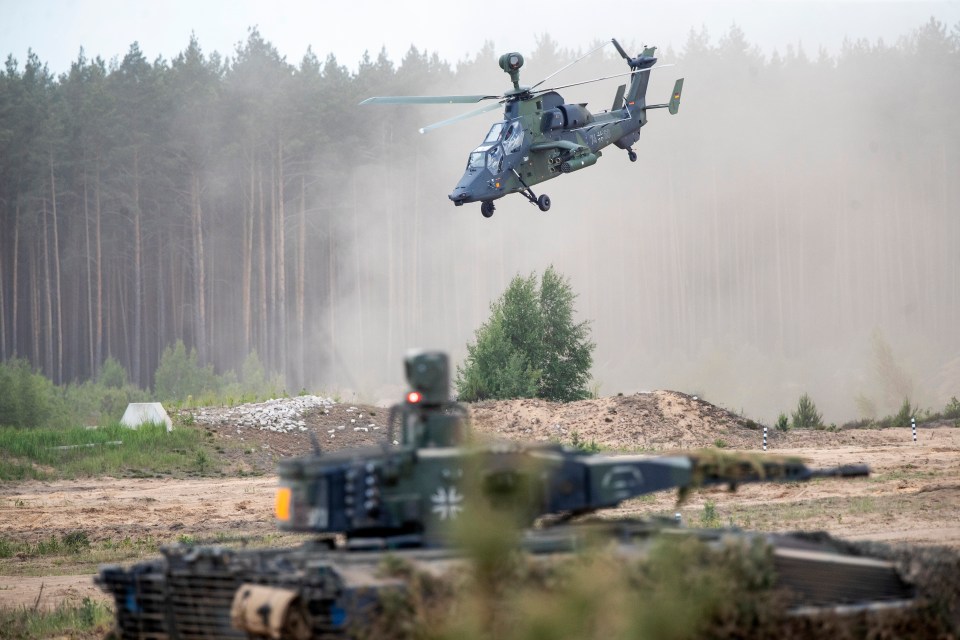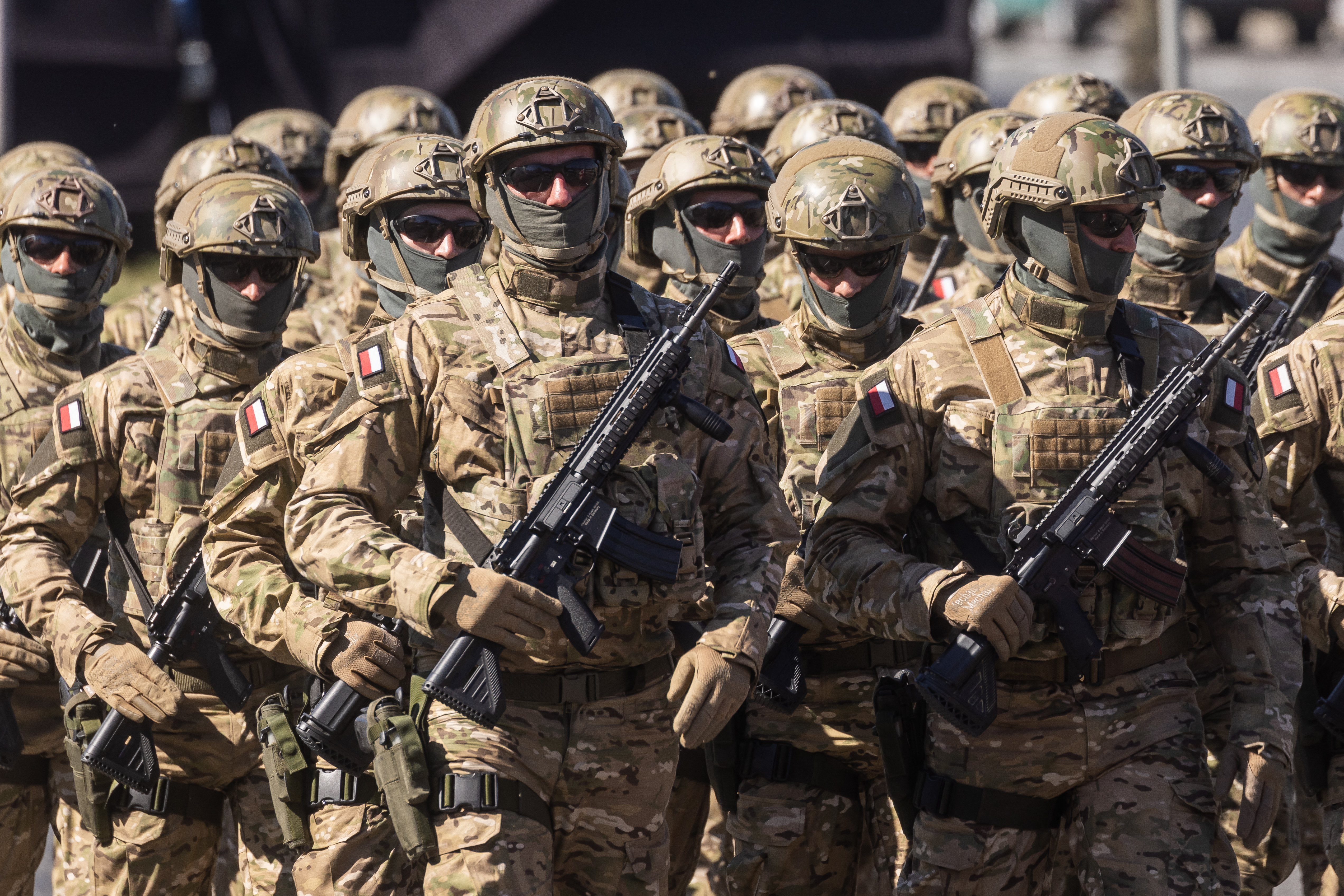
NATO has revealed chilling plans to develop superhighways to rush US troops and war tanks to the frontline in case of a dramatic Russian WW3 invasion.
The new war logistics routes, dubbed "land corridors", will be designed to quickly deploy soldiers and armour to warzones, allowing the West to confront any major threat should Putin choose to attack Europe.
These "corridors of power" will not be subjected to local rules and regulations to ease out military transportation and logistics hassle-free.
In the event of a major attack from Russia, five European ports would be used to land American soldiers who would then be swept in through pre-planned routes to reach frontlines quickly.
Four of these ports allow access to the western Ukrainian border, while the fifth can take the soldiers directly to the Russian border through Finland.
Lt Gen Alexander Sollfrank, the chief of Nato’s Jsec logistics command, told The Telegraph: "Everything is created in a way so the necessary resilience exists – robustness, reserves and also redundancies."
While Nato already has plans to move US troops into Poland via the Netherlands, officials are now planning to expand the routes to have more options amid chilling threats from the Kremlin.
The routes have become a priority for Nato, after the alliance also agreed to ready 300,000 troops at a summit in Lithuania last year.
Yesterday, Russian military analyst and Putin's stooge warned how Poland could be wiped off the map in less than 10 minutes.
It comes as leaders of the alliance warned that the West must prepare for a possible Russian invasion of Nato in the coming years.
Most read in The Sun
Norway's defence chief General Eirik Kristoffersen warned yesterday that the alliance's window to prepare for the deadly Russian invasion has now reduced to just two to three years.
In case Nato forces entering Europe through the Netherlands are hit with heavy bombardment, plans are being developed to channel them through ports in Italy, Greece and Turkey.
US troops could then be sent to Hungry - which shares borders with Ukraine - via land route through Slovenia and Croatia.
Alternatively, plans also exist to move forces from ports in Turkey and Greece to reach the eastern flank of Nato territory.
And now several logistical routes are being constructed on Scandinavian grounds as well as the Balkans to ship Nato fighters.
'WALL OF DRONES'
Nato nations near the Russian border are also planning to create what is being called a "wall of drones" to protect the alliance's eastern flank from increasing Russian threat.
Norway, Finland, the three Baltic states of Estonia, Latvia Lithuania, and Poland have agreed to create a shared drone border to protect the rest of Europe from incoming threats.
According to plans, thousands of surveillance and possibly armed drones are set to patrol the tense frontier all the way from Norway to Poland.
Elaborating on the plan to The Times, Latvian President Edgars Rinkevics said Europe has returned to the "darkest days of the Cold War".
He revealed that unmanned aerial vehicles (UAVs) will monitor attempts by Russia and Belarus to use large numbers of migrants as a "weapon" and other provocations.
Although he said the drones will mostly be used for reconnaissance, he did not rule out that armed drones may also be deployed.
Nato's frontline nations have become increasingly nervous that Vladimir Putin will set his sights on marching further West if he succeeds in Ukraine.
Putin has moved nuclear missiles to Belarus while also piling more weapons into its most westerly territory of Kaliningrad.
Moscow sparked fury after publishing a proposal to redraw its sea borders with Finland and Lithuania.
A former Russian general urged Putin to invade the Baltic states to correct a "historical injustice".
In response to Russian aggression, Estonia is building 600 army bunkers along its frontline as part of plans to create a "Baltic defence line" to strengthen regional security.
POLAND'S 'TUSK LINE'
The development of the "drone wall" comes as Poland is crafting a £2billion 430-mile "Tusk Line" of military defences brimming with minefields, anti-tank ditches and bunkers.
The country shares a 170-mile one with Belarus and a 130-mile border with Kaliningrad, both areas increasingly dumping grounds for Putin's weapons.
Warsaw said it is being targeted by Russian aggression via both those frontiers.
PM Donald Tusk announcing the project earlier this month said it would be “impassable to a potential enemy”.
Read More on The US Sun
The Baltic states are collaborating on the ambitious project - set to be finished by 2028.
Nato's biggest drills
Nato has begun rolling out the big guns in Lithuania during what is its biggest military exercise since the Cold War, Steadfast Defender.
Leopard 2 tanks fired rounds as helicopter blades buzzed ahead and Puma fighting vehicles rolled up for the crescendo of the drills.
Germany's defence chief General Carsten Breuer said: "[The] exercise sends a clear message - a message of deterrence to Russia."
Some 90,000 troops from 32 Nato states have taken part in land, sea, and air Steadfast Defender drills over the past six months.
More than 50 ships from aircraft carriers to destroyers will take part, as well as more than 80 fighter jets, helicopters and drones and at least 1,100 combat vehicles including 133 tanks and 533 infantry fighting vehicles.
The plan behind Steadfast Defender 2024 (STDE24) is to "promote readiness across the strategic, operational and tactical level," Brig Gen Bruegner said.
He added: "The sheer size and ambition of this exercise will show us where we are and how we need to adapt."
One that will send a "clear message inside and outside the military [alliance] that we are ready!"
It's an opportunity to carry out "stress-testing from the top to the bottom," Bruegner said.
"This is how we prepare ourselves, stress this with troops on ground and build capacity towards deterrence."
The Sun joined crack Royal Marines training for war with Russia at their new arctic base Camp Viking in Norway.
We swooped into the frozen outpost on board a Commando Force Merlin helicopter before roaring over icy wastes on camouflaged snowmobiles.
The elite commando force will be helping to spearhead Britain's ground operations during Steadfast Defender.
Speaking to The Sun at the arctic base, Armed Forces Minister James Heappey explained that if Nato went to war with Russia, Britain’s main role would be fighting in Arctic conditions, which are the toughest in the world.
he planned war games will be performed close to Russia's borders in key areas including the Baltics and close to the new WW3 flashpoint, the Suwalki Gap.
The 60-mile Polish-Lithuanian corridor - which connects Belarus to Russia's western enclave of Kaliningrad - has been dubbed Nato's "weakest link" as it's feared to be a future battleground for a Russia-Nato war.
”















